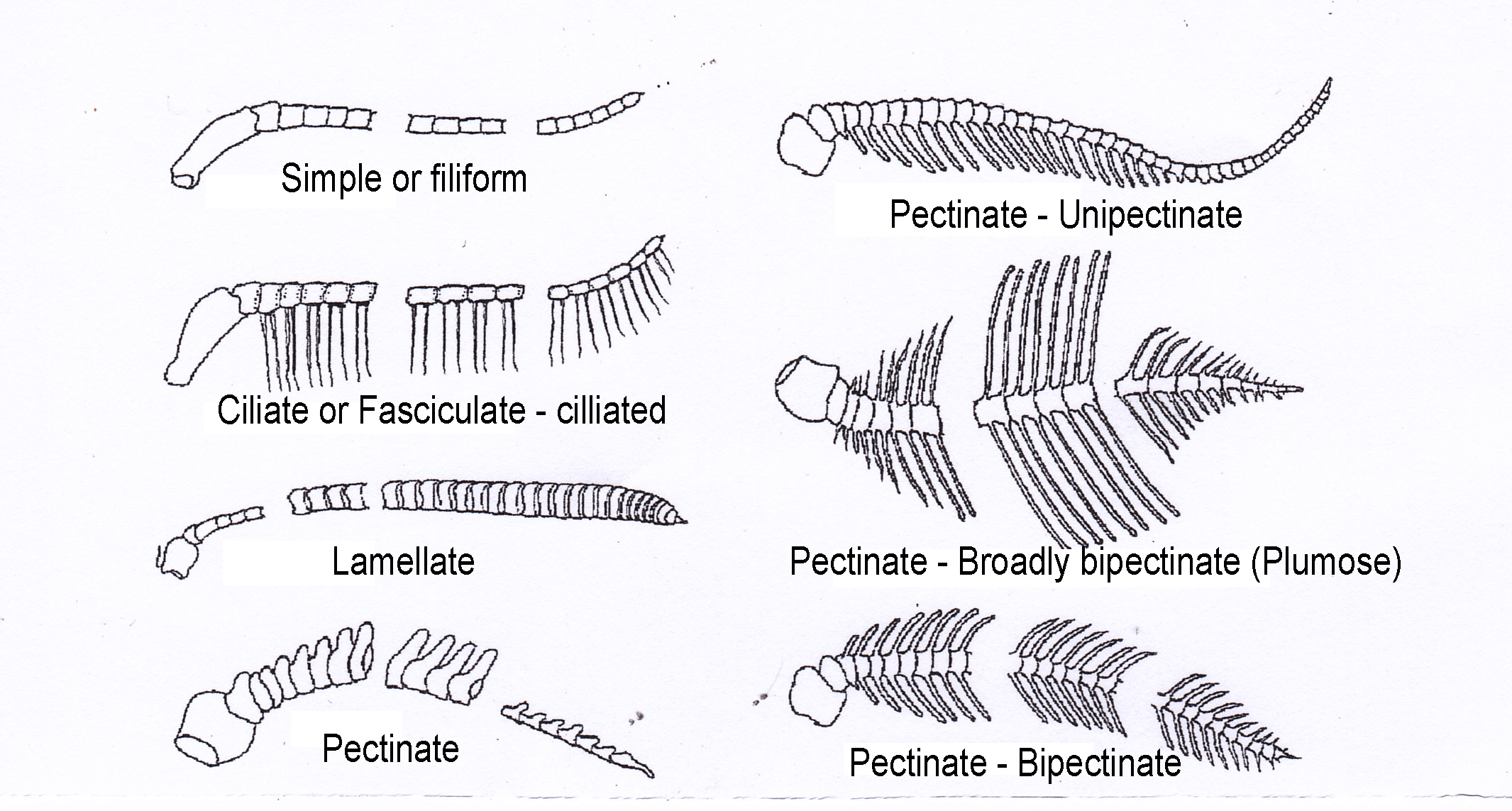.jpg) Most of the important lepidopteran sensory organs are carried on the head. These include the compound eyes, simple eyes (ocelli) and various shaped segmented antennae. The mouthparts in primitive Lepidoptera have chewing mandibles. Non-dentate mandibles of unknown function occur in the Aglossata but in most more advanced groups the galeae of the maxillae are greatly elongated and locked together to form the proboscis, a feeding tube sometimes referred to as a ‘tongue’. This muscular tube can be extended for use but is usually coiled under the head when not in use. In some groups the proboscis is reduced or even absent. The labium of the mouthparts carries a pair of labial palps and the maxillae are represented by a similar pair of maxillary palps.
Most of the important lepidopteran sensory organs are carried on the head. These include the compound eyes, simple eyes (ocelli) and various shaped segmented antennae. The mouthparts in primitive Lepidoptera have chewing mandibles. Non-dentate mandibles of unknown function occur in the Aglossata but in most more advanced groups the galeae of the maxillae are greatly elongated and locked together to form the proboscis, a feeding tube sometimes referred to as a ‘tongue’. This muscular tube can be extended for use but is usually coiled under the head when not in use. In some groups the proboscis is reduced or even absent. The labium of the mouthparts carries a pair of labial palps and the maxillae are represented by a similar pair of maxillary palps.
Labial palpi are usually present in all groups and have three segments (occasionally two). The terminal segment bears the small, rounded, and usually invaginated vom Rath’s sensory organ, near its tip. The maxillary palpi may have up to five segments in some primitive families, but in the more advanced moths they are reduced or even lost completely. Many groups have a sensory organ, the chaetosema, near the eyes. This can range in morphology from a tuft of radiating setae on a raised base to a more complex structure further from the eyes. Its exact function is un- unknown but its presence or absence can be a useful taxonomic diagnostic.
The compound eyes in most Lepidoptera are large and sensitive and made up of numerous hexagonal light sensitive components, the ommatidia. These eyes, although extremely sensitive to moving objects, have a resolution that is inferior to the eyes of higher animals. Short erect hairs that sometimes occur between the ommatidia aid in sensing movement and are especially numerous and characteristic of the Hadeninae (Noctuidae) but can occur in other species (e.g. Monodecus capillatus Whalley, 1976 (Thyrididae).
After the compound eyes the paired antennae are probably the most important sense organs carried on the head. They are tripartite, arising from:
i) a broad modified base, the scape;
ii) a strong basal segment, the pedicel,
iii) followed by a multi-segmented shaft, the flagellum.
The antennae are usually partially clothed in scales and the flagellum varies enormously. Many morphological types can be recognised. These can be very useful for specific diagnosis. The antennae bear a number of sensory organs (sensillae) with Johnston’s organ on the pedicel and odour detecting sensillae on the flagellum. The antennal structure in males is usually much more complex than in the females whose antennae at the simplest may resemble a string of beads.
Different antennal structures
.jpg)
